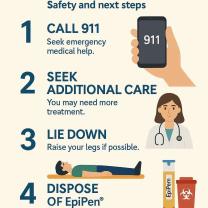What is the life expectancy for Stage 4 COPD?
Stage 4 chronic obstructive pulmonary disease (COPD), also known as very severe COPD, is characterized by significantly impaired lung function and marked symptoms. Life expectancy for individuals with Stage 4 COPD can vary widely depending on various factors, including the person's overall health, lifestyle choices, access to medical care, and adherence to treatment. It's important to note that while Stage 4 COPD is associated with a reduced life expectancy, it is not possible to predict an exact lifespan for any individual.
Here are some general considerations regarding life expectancy in Stage 4 COPD:
Severity of Lung Function Impairment: Stage 4 COPD is associated with a very low forced expiratory volume in one second (FEV1), which is a measure of lung function. The lower the FEV1, the more severe the impairment. However, life expectancy can vary even within this stage based on the degree of lung function impairment.
Symptoms and Quality of Life: Individuals with Stage 4 COPD often experience severe symptoms, including shortness of breath, frequent exacerbations (flare-ups), and reduced exercise tolerance. These symptoms can significantly impact a person's quality of life and daily functioning.
Treatment and Management: The management of Stage 4 COPD includes medications, pulmonary rehabilitation, oxygen therapy, and lifestyle changes. Adherence to treatment and the effectiveness of symptom management can influence life expectancy.
Comorbidities: Many individuals with COPD have other health conditions, known as comorbidities, such as heart disease, diabetes, or hypertension. These comorbidities can complicate the course of the disease and affect life expectancy.
Smoking Cessation: Smoking is a major risk factor for COPD. Quitting smoking, even after a COPD diagnosis, can slow the progression of the disease and improve life expectancy. Continued smoking can worsen symptoms and hasten disease progression.
Access to Healthcare: Access to medical care, including early diagnosis and appropriate management, can have a significant impact on life expectancy. Regular medical monitoring and access to treatments can help improve outcomes.
Individual Factors: Each person's response to COPD and its treatment is unique. Factors such as genetics, social support, and mental health can also influence outcomes.
It's important for individuals with Stage 4 COPD to work closely with healthcare professionals to manage their condition effectively, optimize their quality of life, and address any comorbidities. While Stage 4 COPD is associated with a reduced life expectancy, many individuals can continue to live meaningful and fulfilling lives with appropriate care and support.
Ultimately, discussions about life expectancy should be conducted with a healthcare provider who can provide personalized insights based on an individual's specific circumstances and health status.












